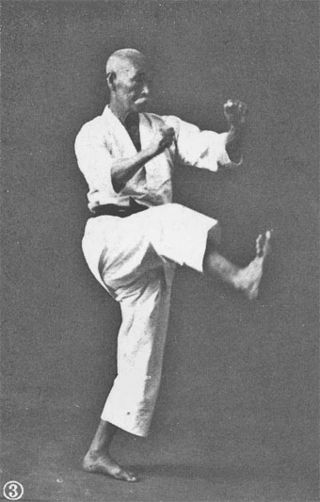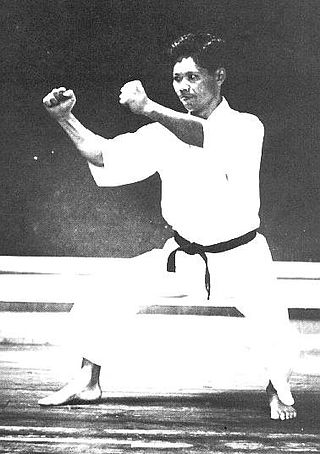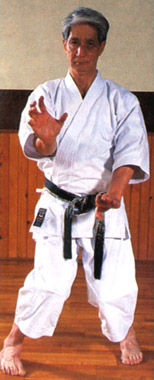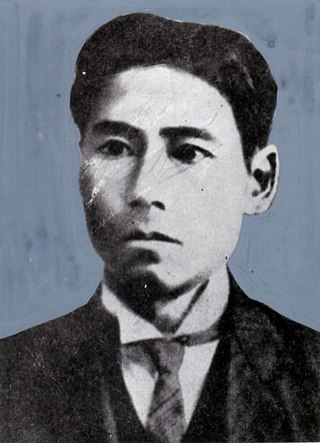Related Research Articles

Karate (空手), also karate-do, is a martial art developed in the Ryukyu Kingdom. It developed from the indigenous Ryukyuan martial arts under the influence of Chinese martial arts. While modern karate is primarily a striking art that uses punches and kicks, traditional karate also employs throwing and joint locking techniques. A karate practitioner is called a karate-ka (空手家).
Survivalism is a social movement of individuals or groups who proactively prepare for emergencies, such as natural disasters, and other disasters causing disruption to social order caused by political or economic crises. Preparations may anticipate short-term scenarios or long-term, on scales ranging from personal adversity, to local disruption of services, to international or global catastrophe. There is no bright line dividing general emergency preparedness from prepping in the form of survivalism, but a qualitative distinction is often recognized whereby preppers/survivalists prepare especially extensively because they have higher estimations of the risk of catastrophes happening. Nonetheless, prepping can be as limited as preparing for a personal emergency, or it can be as extensive as a personal identity or collective identity with a devoted lifestyle.

Shotokan is a style of karate, developed from various martial arts by Gichin Funakoshi (1868–1957) and his son Gigo (Yoshitaka) Funakoshi (1906–1945). Gichin Funakoshi was born in Okinawa and is widely credited with popularizing "karate do" through a series of public demonstrations, and by promoting the development of university karate clubs, including those at Keio, Waseda, Hitotsubashi (Shodai), Takushoku, Chuo, Gakushuin, and Hosei.

Dan Inosanto is an American martial arts instructor and actor. Inosanto holds Instructor or black belt level ranks in several martial arts. He has studied traditional Okinawan karate, Judo, Jujutsu, Kenpo, Shoot wrestling, Systema, Filipino martial arts, and Jeet Kune Do. He was one of three people who were appointed to teach at one of the three Jun Fan Gung Fu institutes under Bruce Lee, the other two being Taky Kimura and James Yimm Lee. After Bruce Lee's death, Inosanto became the principal spokesperson and historian for Jeet Kune Do.
The following outline is provided as an overview of and topical guide to martial arts:
Dōjō kun (道場訓) is a Japanese martial arts term literally meaning "training hall rules." They are generally posted at the entrance to a dōjō or at the "front" of the dōjō (shomen) and outline behaviour expected and disallowed. In some styles of martial arts they are recited at the end of a class.

Fumio Demura was a Japanese karateka and kobudoka, based in the United States since the mid-1960s. A 9th dan in Shitō-ryū karate, he was Pat Morita's martial arts stunt double in the first, third and fourth Karate Kid films, and was one of the inspirations for the character Mr. Miyagi.
Naihanchi (ナイハンチ) is a karate kata, performed in straddle stance. It translates to 'internal divided conflict'. The form makes use of in-fighting techniques and grappling. In Shorin-Ryu and Matsubayashi-ryū Naihanchi Shodan is the first ni kyu although it is taught to yon kyu occasionally before evaluations for the ni kyu rank. It is also the first Shorin-ryu and Shindo jinen-ryu kata to start with a technique to the right instead of the left. There are three modern kata derived from this. Some researchers believe Nidan and Sandan were created by Anko Itosu, but others believe that it was originally one kata broken into three separate parts. The fact that only Naihanchi/Tekki Shodan has a formal opening suggests the kata was split.
Kosaku Matsumora was a Ryūkyūan karate master. He studied Tomari-te under Karyu Uku and Kishin Teruya. He also studied Jigen-ryu. Among Matsumora's students, who went on to influence new generations through students of their own, were Choki Motobu and Chotoku Kyan.

Jūkendō (銃剣道) is the Japanese martial art of bayonet fighting, and has been likened to kendo.
Mel Tappan was the editor of the newsletter Personal Survival ("P.S.") Letter and the books Survival Guns and Tappan on Survival. Tappan was an influential leader of the Survivalist movement who advocated relocation to survival retreats in lightly populated regions.
George Dillman is a controversial American martial arts instructor, who popularized the use of techniques such as pressure points among the United States' martial arts practitioners. Dillman is a member of Black Belt magazine's Hall of Fame, and in 1997 was named Black Belt Magazine's "Martial Arts Instructor of the Year". For 30 years, he ran the Northeast Karate Championships. Dillman also conducts martial arts training seminars at the former Muhammad Ali training camp at Deer Lake, Pennsylvania. Dillman has been subject to scrutiny stemming from the fact that many of his most famous techniques don't work, especially those involving alleged touchless chi manipulation.

Gigō Funakoshi was the third son of Gichin Funakoshi and is widely credited with developing the foundation of the modern karate Shotokan style.

Hidetaka Nishiyama was a prominent Japanese master of Shotokan karate. He was an internationally recognized instructor, author, and administrator, and helped to establish the Japan Karate Association. Nishiyama was one of the last surviving students of Gichin Funakoshi, founder of Shotokan karate. He was based in the United States of America from 1961 until his death in 2008, and was a pioneer of karate in that country. He had been posthumously awarded the rank of 10th dan in karate.
The table contains a comparison of karate styles. Some of the distinguishing features are listed, such as lineage, general form of stances, the balance of hard and soft techniques, and the number and names of kata forms.

In the survivalist subculture or movement, a retreat is a place of refuge. Sometimes their retreats are called a bug-out location (BOL), a bunker, a bolt hole or a hidesite. Survivalist retreats are intended to be self-sufficient and easily defended. Generally, they are located in sparsely populated outback rural areas.
Portrayals of survivalism, and survivalist themes and elements such as survival retreats have been fictionalised in print, film, and electronic media. This genre was especially influenced by the advent of nuclear weapons, and the potential for societal collapse in light of a Cold War nuclear conflagration.
Most early Asian settlers to the United States went to Hawaii. Most of these early immigrants moved to the islands as laborers to work on the pineapple, coconut, and sugarcane plantations. These early migrants have tended to stay, although a handful returned to their home countries. Most people in Hawaii of Asian ancestry/origin are Filipino, Japanese, or Chinese. There has also been recent immigration to Hawaii from more ethnic Asian groups, including Thai, Indian, Indonesian, and Vietnamese.
The Okinawans in Hawaii are a Ryukyuan ethnic group, numbering anywhere between 45,000-50,000 people, or 3% of Hawaii’s total population.

Kyuzo Toyama was an Okinawan political activist. He is commonly referred to as the "father of Okinawan emigration" due to his work in sending Okinawans abroad.
References
- ↑ Paladin Press Featured Author - Bruce D. Clayton, Ph.D Archived May 9, 2008, at the Wayback Machine
- ↑ Black Belt Magazine article about Clayton Archived April 2, 2008, at the Wayback Machine
- ↑ Bruce D. Clayton, Ph.D
- ↑ "Shotokan's Secret - Bruce D. Clayton". Archived from the original on 2008-03-12. Retrieved 2008-05-11.